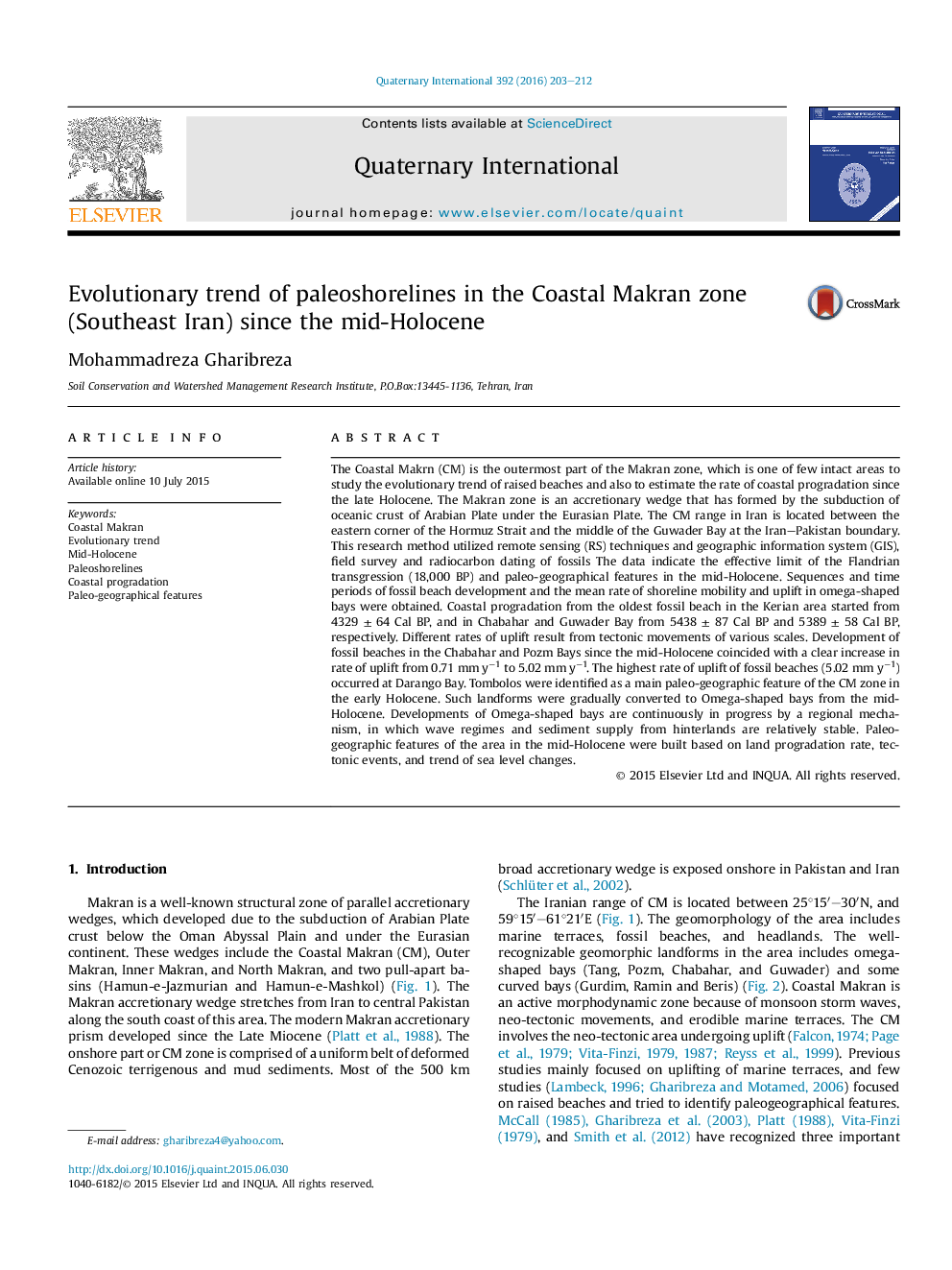| کد مقاله | کد نشریه | سال انتشار | مقاله انگلیسی | نسخه تمام متن |
|---|---|---|---|---|
| 1040398 | 1484106 | 2016 | 10 صفحه PDF | دانلود رایگان |
The Coastal Makrn (CM) is the outermost part of the Makran zone, which is one of few intact areas to study the evolutionary trend of raised beaches and also to estimate the rate of coastal progradation since the late Holocene. The Makran zone is an accretionary wedge that has formed by the subduction of oceanic crust of Arabian Plate under the Eurasian Plate. The CM range in Iran is located between the eastern corner of the Hormuz Strait and the middle of the Guwader Bay at the Iran–Pakistan boundary. This research method utilized remote sensing (RS) techniques and geographic information system (GIS), field survey and radiocarbon dating of fossils The data indicate the effective limit of the Flandrian transgression (18,000 BP) and paleo-geographical features in the mid-Holocene. Sequences and time periods of fossil beach development and the mean rate of shoreline mobility and uplift in omega-shaped bays were obtained. Coastal progradation from the oldest fossil beach in the Kerian area started from 4329 ± 64 Cal BP, and in Chabahar and Guwader Bay from 5438 ± 87 Cal BP and 5389 ± 58 Cal BP, respectively. Different rates of uplift result from tectonic movements of various scales. Development of fossil beaches in the Chabahar and Pozm Bays since the mid-Holocene coincided with a clear increase in rate of uplift from 0.71 mm y−1 to 5.02 mm y−1. The highest rate of uplift of fossil beaches (5.02 mm y−1) occurred at Darango Bay. Tombolos were identified as a main paleo-geographic feature of the CM zone in the early Holocene. Such landforms were gradually converted to Omega-shaped bays from the mid-Holocene. Developments of Omega-shaped bays are continuously in progress by a regional mechanism, in which wave regimes and sediment supply from hinterlands are relatively stable. Paleo-geographic features of the area in the mid-Holocene were built based on land progradation rate, tectonic events, and trend of sea level changes.
Journal: Quaternary International - Volume 392, 21 January 2016, Pages 203–212
